Soumi Chattopadhyay
ProtoSiTex: Learning Semi-Interpretable Prototypes for Multi-label Text Classification
Oct 14, 2025



Abstract:The surge in user-generated reviews has amplified the need for interpretable models that can provide fine-grained insights. Existing prototype-based models offer intuitive explanations but typically operate at coarse granularity (sentence or document level) and fail to address the multi-label nature of real-world text classification. We propose ProtoSiTex, a semi-interpretable framework designed for fine-grained multi-label text classification. ProtoSiTex employs a dual-phase alternating training strategy: an unsupervised prototype discovery phase that learns semantically coherent and diverse prototypes, and a supervised classification phase that maps these prototypes to class labels. A hierarchical loss function enforces consistency across sub-sentence, sentence, and document levels, enhancing interpretability and alignment. Unlike prior approaches, ProtoSiTex captures overlapping and conflicting semantics using adaptive prototypes and multi-head attention. We also introduce a benchmark dataset of hotel reviews annotated at the sub-sentence level with multiple labels. Experiments on this dataset and two public benchmarks (binary and multi-class) show that ProtoSiTex achieves state-of-the-art performance while delivering faithful, human-aligned explanations, establishing it as a robust solution for semi-interpretable multi-label text classification.
An Adaptive Data-Resilient Multi-Modal Framework for Hierarchical Multi-Label Book Genre Identification
May 05, 2025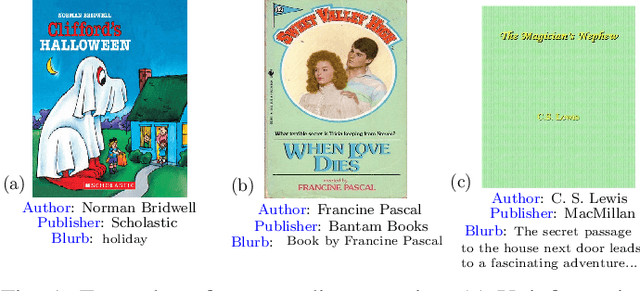
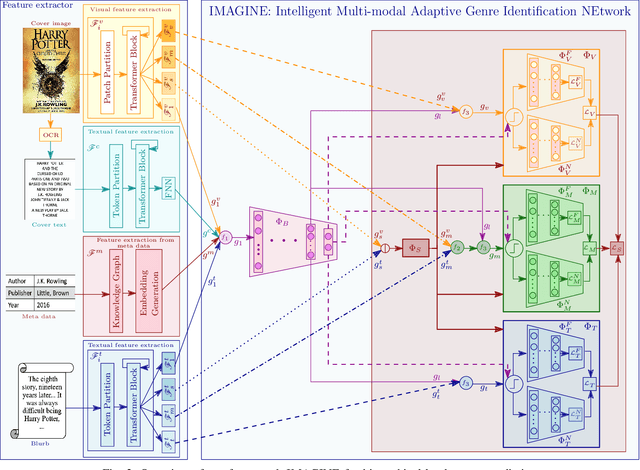
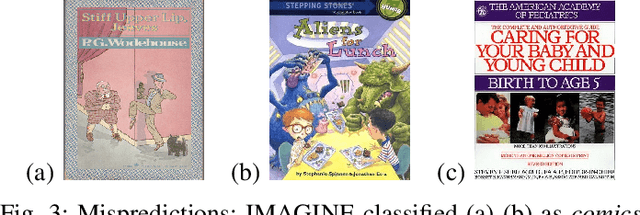
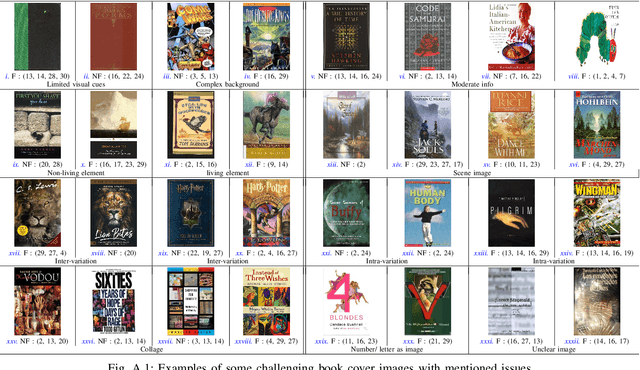
Abstract:Identifying the finer details of a book's genres enhances user experience by enabling efficient book discovery and personalized recommendations, ultimately improving reader engagement and satisfaction. It also provides valuable insights into market trends and consumer preferences, allowing publishers and marketers to make data-driven decisions regarding book production and marketing strategies. While traditional book genre classification methods primarily rely on review data or textual analysis, incorporating additional modalities, such as book covers, blurbs, and metadata, can offer richer context and improve prediction accuracy. However, the presence of incomplete or noisy information across these modalities presents a significant challenge. This paper introduces IMAGINE (Intelligent Multi-modal Adaptive Genre Identification NEtwork), a framework designed to address these complexities. IMAGINE extracts robust feature representations from multiple modalities and dynamically selects the most informative sources based on data availability. It employs a hierarchical classification strategy to capture genre relationships and remains adaptable to varying input conditions. Additionally, we curate a hierarchical genre classification dataset that structures genres into a well-defined taxonomy, accommodating the diverse nature of literary works. IMAGINE integrates information from multiple sources and assigns multiple genre labels to each book, ensuring a more comprehensive classification. A key feature of our framework is its resilience to incomplete data, enabling accurate predictions even when certain modalities, such as text, images, or metadata, are missing or incomplete. Experimental results show that IMAGINE outperformed existing baselines in genre classification accuracy, particularly in scenarios with insufficient modality-specific data.
Anomaly Resilient Temporal QoS Prediction using Hypergraph Convoluted Transformer Network
Oct 23, 2024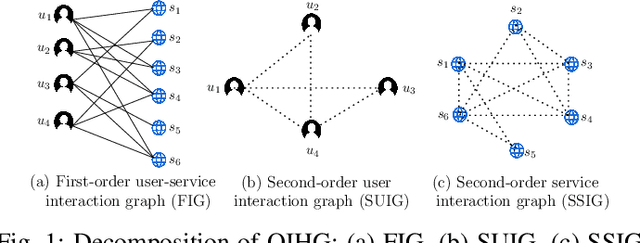
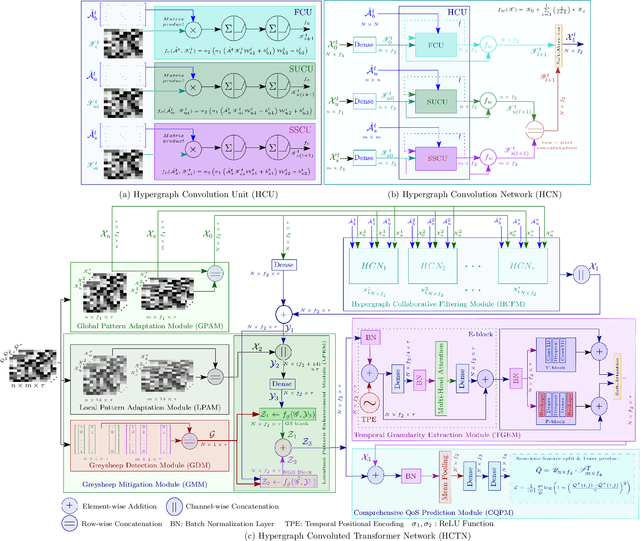

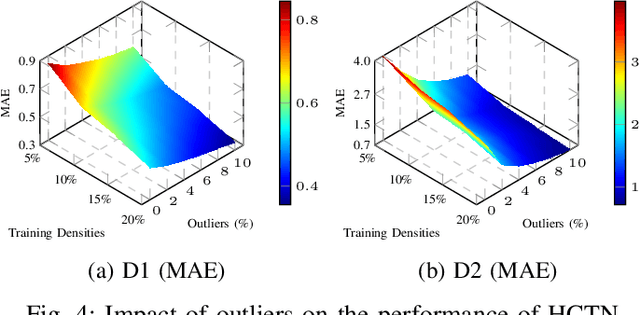
Abstract:Quality-of-Service (QoS) prediction is a critical task in the service lifecycle, enabling precise and adaptive service recommendations by anticipating performance variations over time in response to evolving network uncertainties and user preferences. However, contemporary QoS prediction methods frequently encounter data sparsity and cold-start issues, which hinder accurate QoS predictions and limit the ability to capture diverse user preferences. Additionally, these methods often assume QoS data reliability, neglecting potential credibility issues such as outliers and the presence of greysheep users and services with atypical invocation patterns. Furthermore, traditional approaches fail to leverage diverse features, including domain-specific knowledge and complex higher-order patterns, essential for accurate QoS predictions. In this paper, we introduce a real-time, trust-aware framework for temporal QoS prediction to address the aforementioned challenges, featuring an end-to-end deep architecture called the Hypergraph Convoluted Transformer Network (HCTN). HCTN combines a hypergraph structure with graph convolution over hyper-edges to effectively address high-sparsity issues by capturing complex, high-order correlations. Complementing this, the transformer network utilizes multi-head attention along with parallel 1D convolutional layers and fully connected dense blocks to capture both fine-grained and coarse-grained dynamic patterns. Additionally, our approach includes a sparsity-resilient solution for detecting greysheep users and services, incorporating their unique characteristics to improve prediction accuracy. Trained with a robust loss function resistant to outliers, HCTN demonstrated state-of-the-art performance on the large-scale WSDREAM-2 datasets for response time and throughput.
SafeTail: Efficient Tail Latency Optimization in Edge Service Scheduling via Computational Redundancy Management
Aug 30, 2024
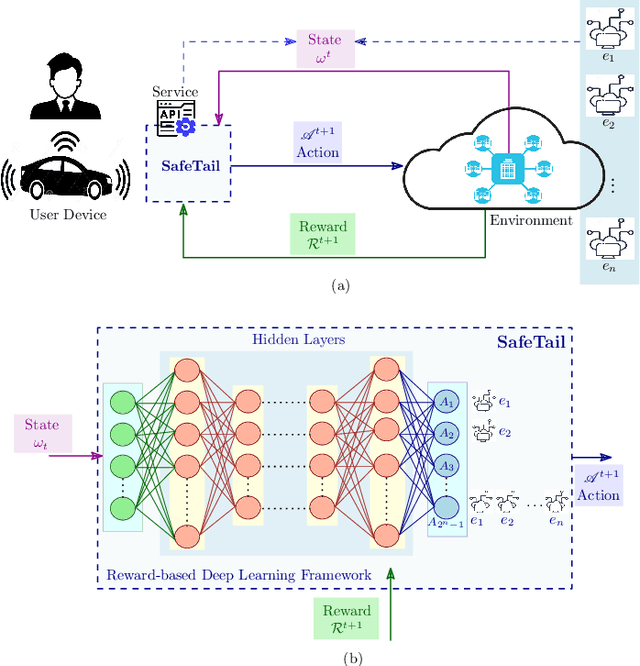
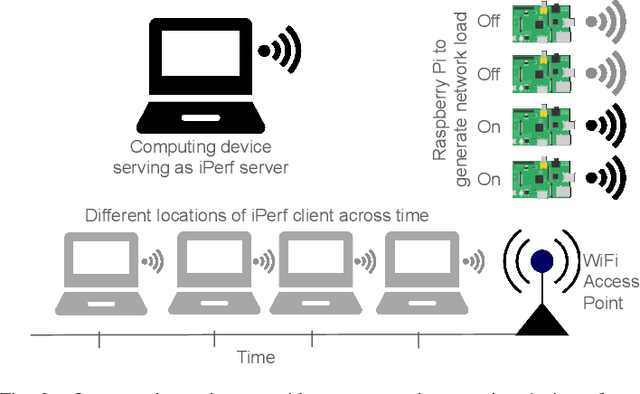
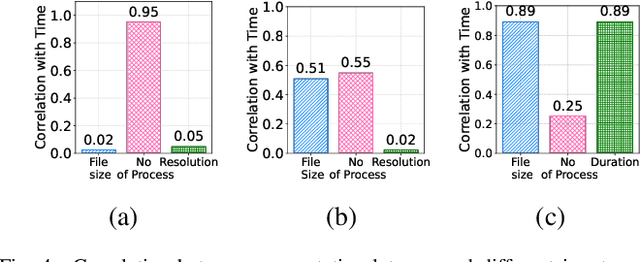
Abstract:Optimizing tail latency while efficiently managing computational resources is crucial for delivering high-performance, latency-sensitive services in edge computing. Emerging applications, such as augmented reality, require low-latency computing services with high reliability on user devices, which often have limited computational capabilities. Consequently, these devices depend on nearby edge servers for processing. However, inherent uncertainties in network and computation latencies stemming from variability in wireless networks and fluctuating server loads make service delivery on time challenging. Existing approaches often focus on optimizing median latency but fall short of addressing the specific challenges of tail latency in edge environments, particularly under uncertain network and computational conditions. Although some methods do address tail latency, they typically rely on fixed or excessive redundancy and lack adaptability to dynamic network conditions, often being designed for cloud environments rather than the unique demands of edge computing. In this paper, we introduce SafeTail, a framework that meets both median and tail response time targets, with tail latency defined as latency beyond the 90^th percentile threshold. SafeTail addresses this challenge by selectively replicating services across multiple edge servers to meet target latencies. SafeTail employs a reward-based deep learning framework to learn optimal placement strategies, balancing the need to achieve target latencies with minimizing additional resource usage. Through trace-driven simulations, SafeTail demonstrated near-optimal performance and outperformed most baseline strategies across three diverse services.
Demystifying Visual Features of Movie Posters for Multi-Label Genre Identification
Sep 21, 2023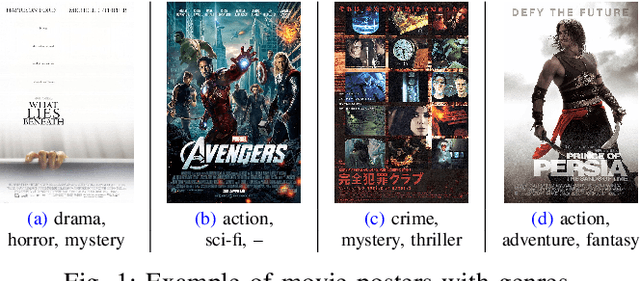

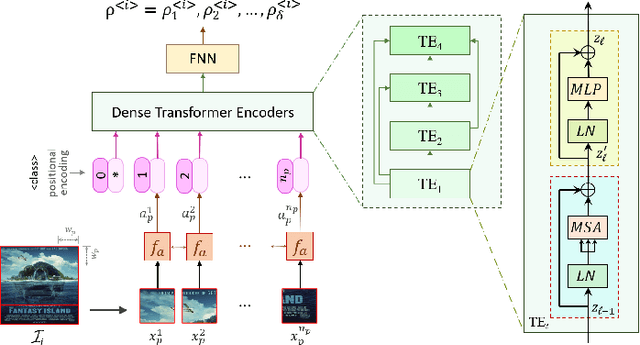

Abstract:In the film industry, movie posters have been an essential part of advertising and marketing for many decades, and continue to play a vital role even today in the form of digital posters through online, social media and OTT platforms. Typically, movie posters can effectively promote and communicate the essence of a film, such as its genre, visual style/ tone, vibe and storyline cue/ theme, which are essential to attract potential viewers. Identifying the genres of a movie often has significant practical applications in recommending the film to target audiences. Previous studies on movie genre identification are limited to subtitles, plot synopses, and movie scenes that are mostly accessible after the movie release. Posters usually contain pre-release implicit information to generate mass interest. In this paper, we work for automated multi-label genre identification only from movie poster images, without any aid of additional textual/meta-data information about movies, which is one of the earliest attempts of its kind. Here, we present a deep transformer network with a probabilistic module to identify the movie genres exclusively from the poster. For experimental analysis, we procured 13882 number of posters of 13 genres from the Internet Movie Database (IMDb), where our model performances were encouraging and even outperformed some major contemporary architectures.
TPMCF: Temporal QoS Prediction using Multi-Source Collaborative Features
Mar 30, 2023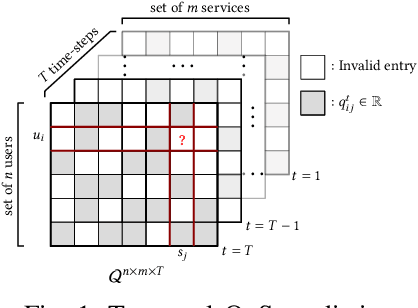
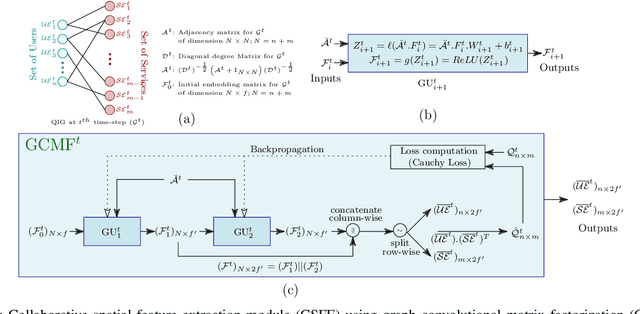
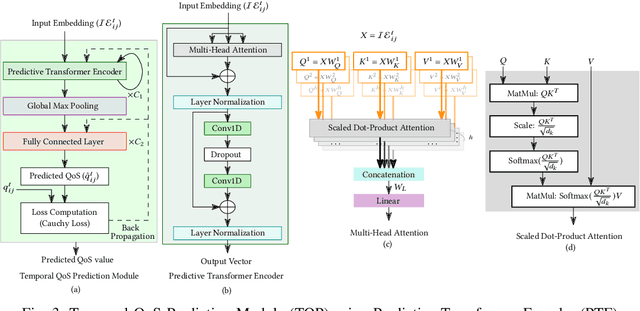
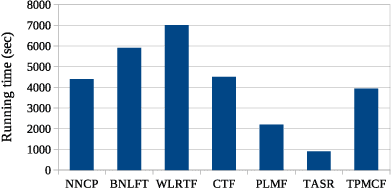
Abstract:Recently, with the rapid deployment of service APIs, personalized service recommendations have played a paramount role in the growth of the e-commerce industry. Quality-of-Service (QoS) parameters determining the service performance, often used for recommendation, fluctuate over time. Thus, the QoS prediction is essential to identify a suitable service among functionally equivalent services over time. The contemporary temporal QoS prediction methods hardly achieved the desired accuracy due to various limitations, such as the inability to handle data sparsity and outliers and capture higher-order temporal relationships among user-service interactions. Even though some recent recurrent neural-network-based architectures can model temporal relationships among QoS data, prediction accuracy degrades due to the absence of other features (e.g., collaborative features) to comprehend the relationship among the user-service interactions. This paper addresses the above challenges and proposes a scalable strategy for Temporal QoS Prediction using Multi-source Collaborative-Features (TPMCF), achieving high prediction accuracy and faster responsiveness. TPMCF combines the collaborative-features of users/services by exploiting user-service relationship with the spatio-temporal auto-extracted features by employing graph convolution and transformer encoder with multi-head self-attention. We validated our proposed method on WS-DREAM-2 datasets. Extensive experiments showed TPMCF outperformed major state-of-the-art approaches regarding prediction accuracy while ensuring high scalability and reasonably faster responsiveness.
Detecting Severity of Diabetic Retinopathy from Fundus Images using Ensembled Transformers
Jan 03, 2023Abstract:Diabetic Retinopathy (DR) is considered one of the primary concerns due to its effect on vision loss among most people with diabetes globally. The severity of DR is mostly comprehended manually by ophthalmologists from fundus photography-based retina images. This paper deals with an automated understanding of the severity stages of DR. In the literature, researchers have focused on this automation using traditional machine learning-based algorithms and convolutional architectures. However, the past works hardly focused on essential parts of the retinal image to improve the model performance. In this paper, we adopt transformer-based learning models to capture the crucial features of retinal images to understand DR severity better. We work with ensembling image transformers, where we adopt four models, namely ViT (Vision Transformer), BEiT (Bidirectional Encoder representation for image Transformer), CaiT (Class-Attention in Image Transformers), and DeiT (Data efficient image Transformers), to infer the degree of DR severity from fundus photographs. For experiments, we used the publicly available APTOS-2019 blindness detection dataset, where the performances of the transformer-based models were quite encouraging.
Deep Analysis of Visual Product Reviews
Jul 19, 2022
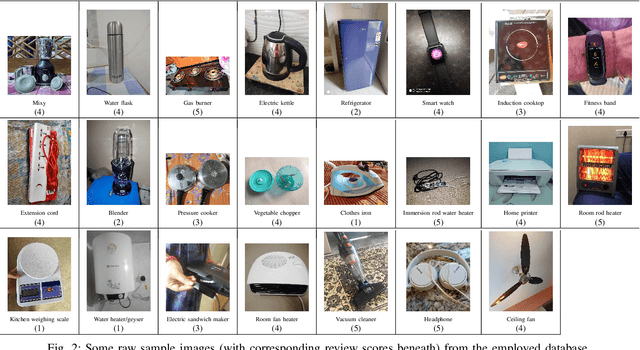
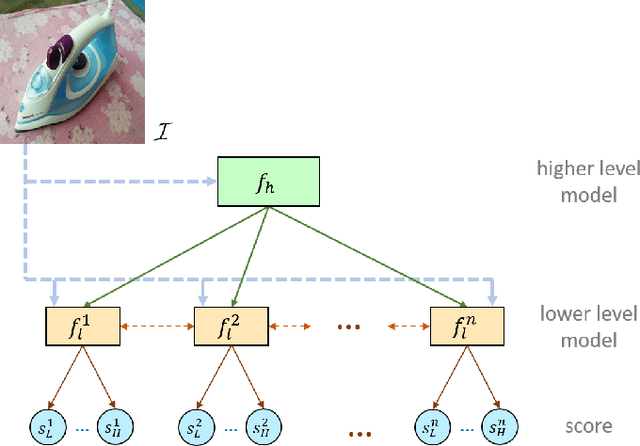
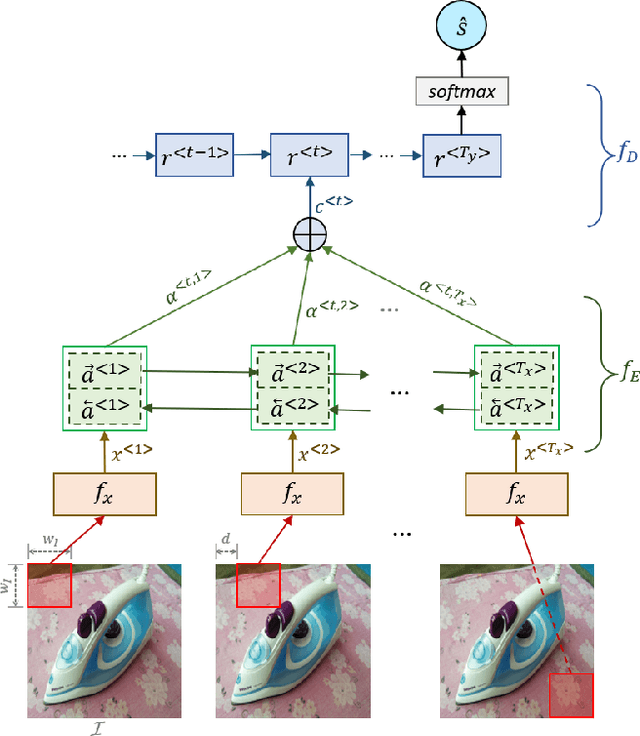
Abstract:With the proliferation of the e-commerce industry, analyzing customer feedback is becoming indispensable to a service provider. In recent days, it can be noticed that customers upload the purchased product images with their review scores. In this paper, we undertake the task of analyzing such visual reviews, which is very new of its kind. In the past, the researchers worked on analyzing language feedback, but here we do not take any assistance from linguistic reviews that may be absent, since a recent trend can be observed where customers prefer to quickly upload the visual feedback instead of typing language feedback. We propose a hierarchical architecture, where the higher-level model engages in product categorization, and the lower-level model pays attention to predicting the review score from a customer-provided product image. We generated a database by procuring real visual product reviews, which was quite challenging. Our architecture obtained some promising results by performing extensive experiments on the employed database. The proposed hierarchical architecture attained a 57.48% performance improvement over the single-level best comparable architecture.
FES: A Fast Efficient Scalable QoS Prediction Framework
Mar 16, 2021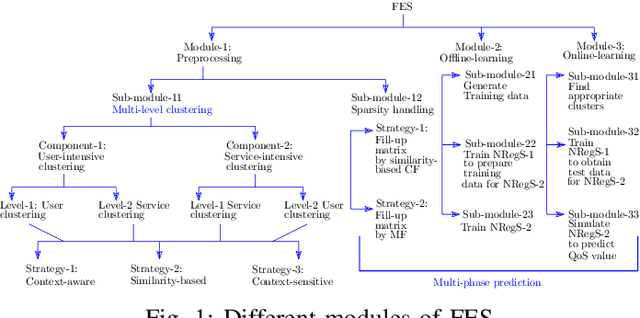
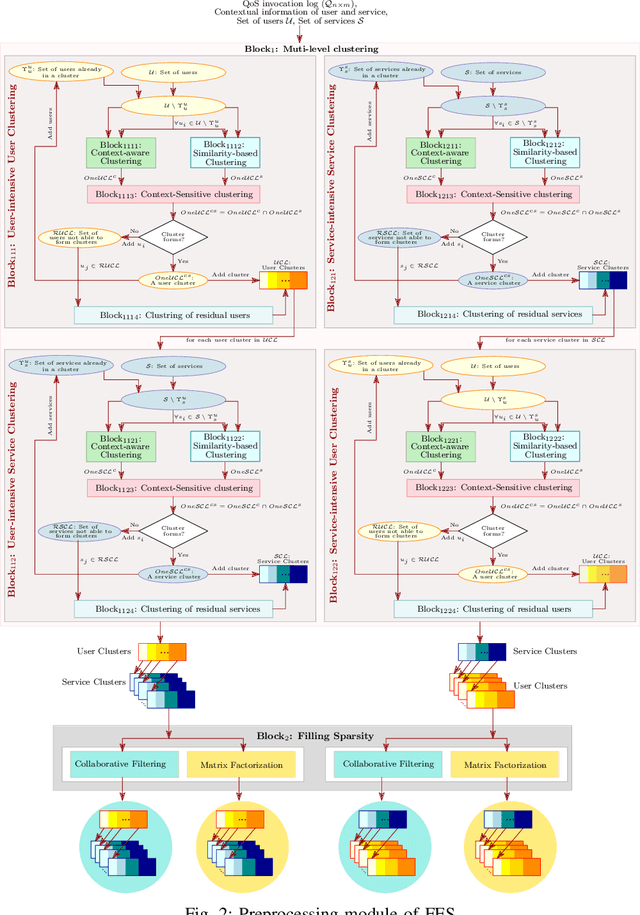
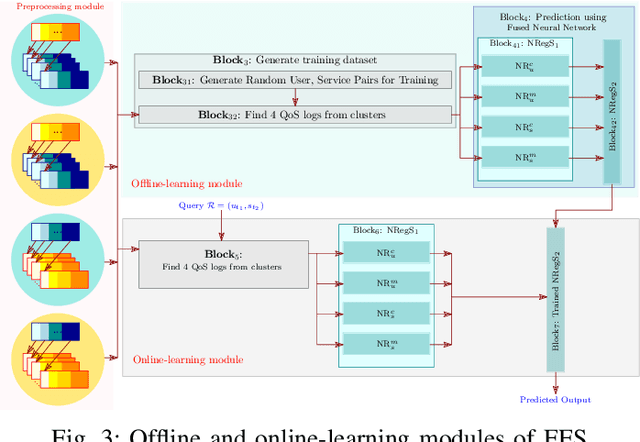

Abstract:Quality-of-Service prediction of web service is an integral part of services computing due to its diverse applications in the various facets of a service life cycle, such as service composition, service selection, service recommendation. One of the primary objectives of designing a QoS prediction algorithm is to achieve satisfactory prediction accuracy. However, accuracy is not the only criteria to meet while developing a QoS prediction algorithm. The algorithm has to be faster in terms of prediction time so that it can be integrated into a real-time recommendation or composition system. The other important factor to consider while designing the prediction algorithm is scalability to ensure that the prediction algorithm can tackle large-scale datasets. The existing algorithms on QoS prediction often compromise on one goal while ensuring the others. In this paper, we propose a semi-offline QoS prediction model to achieve three important goals simultaneously: higher accuracy, faster prediction time, scalability. Here, we aim to predict the QoS value of service that varies across users. Our framework consists of multi-phase prediction algorithms: preprocessing-phase prediction, online prediction, and prediction using the pre-trained model. In the preprocessing phase, we first apply multi-level clustering on the dataset to obtain correlated users and services. We then preprocess the clusters using collaborative filtering to remove the sparsity of the given QoS invocation log matrix. Finally, we create a two-staged, semi-offline regression model using neural networks to predict the QoS value of service to be invoked by a user in real-time. Our experimental results on four publicly available WS-DREAM datasets show the efficiency in terms of accuracy, scalability, fast responsiveness of our framework as compared to the state-of-the-art methods.
A Methodology for Search Space Reduction in QoS Aware Semantic Web Service Composition
Sep 19, 2018



Abstract:The semantic information regulates the expressiveness of a web service. State-of-the-art approaches in web services research have used the semantics of a web service for different purposes, mainly for service discovery, composition, execution etc. In this paper, our main focus is on semantic driven Quality of Service (QoS) aware service composition. Most of the contemporary approaches on service composition have used the semantic information to combine the services appropriately to generate the composition solution. However, in this paper, our intention is to use the semantic information to expedite the service composition algorithm. Here, we present a service composition framework that uses semantic information of a web service to generate different clusters, where the services are semantically related within a cluster. Our final aim is to construct a composition solution using these clusters that can efficiently scale to large service spaces, while ensuring solution quality. Experimental results show the efficiency of our proposed method.
 Add to Chrome
Add to Chrome Add to Firefox
Add to Firefox Add to Edge
Add to Edge